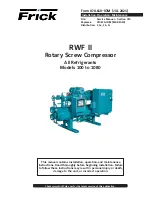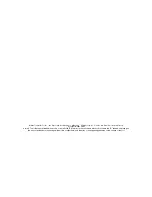
3. Safety regulations
11
Use only original spare parts.
Only carry out maintenance and repair work when the
system is not in operation and the power supply
disconnected. Ensure that the power unit cannot be
switched on inadvertently.
Before removing or opening pressurized components,
positively isolate any source of pressure and
depressurize the entire system.
Never weld near oil systems or carry out any other work
requiring heat. Pressure reservoirs or components and
pipes containing oil have to be drained completely and
cleaned, for example by means of a steam jet, before
beginning such work.
Never weld any pressure reservoir or change it in any
way.
If work which produces heat, flames or sparks has to be
carried out on a machine, the adjacent components
have to be protected by means of non inflammable
material.
Before releasing the power unit for operation after
maintenance or overhaul, check that the operating
pressures, temperatures and time settings are correct
and that the regulating and shut-down equipment
function properly.
Every six months, check the pressure pipe and
pressure vibration damper for carbon deposits. If
excessive deposits are found, they should be removed.
Motor, air filter, electrical components and regulating
equipment have to protected from the ingress of
humidity, e.g. when cleaning the system by means of a
steam jet.
Under no circumstance must the sound-proofing
material be removed or modified.
Never use etching solvents which could attack the
materials used.
If indicated or if there is any suspicion that an internal
part of the machine has run hot, the machine has to be
shut down.
In order to avoid an increase in the operating
temperature, check and clean the heat transfer
surfaces (cooling fins, intermediate cooler, water
cooling jackets, etc.) at regular intervals. Prepare a plan
of the most favourable cleaning intervals for each
machine.
Avoid damage to the safety valves and other pressure
reducing components. Check in particular for clogging
caused by paint, oil carbon or the accumulation of dust,
which could deteriorate the effectiveness of these
components.
Insulation or protective shielding, the temperature of
which may exceed 70 °C/158 °F and which could be
erroneously touched by the personnel, must not be
removed before these parts have cooled down to room
temperature.
Check the accuracy of pressure and temperature
indicators at regular intervals. If the admissible
tolerance limits have been exceeded, these devices
have to be replaced.
Before removing or overhauling a compressor, a motor
or another machine, ensure that all moveable parts of a
mass of more than 15 kg cannot move or roll away.
After completion of repair work, always verify that no
tools, loose parts or cloths have been left in or on the
machine, drive motor or drive equipment. Machines
performing a back and forward main movement have to
be cycled at least once, rotating machines have to be
cycled several times in order to ensure that there are no
mechanical faults in the machine or the drive member.
Check the direction of rotation of the electric motors
during first commissioning and after each modification
of the electrical connections in order to prevent the
compressor from being damaged.
The fastening of loads and the instructing of crane
operators should be entrusted to experienced persons
only. The person giving the instructions must be within
sight or voice contact with the operator.
For carrying out overhead assembly work always use
specially designed or otherwise safety-orientated
ladders and working platforms. Never use machine
parts as a climbing aid. Wear a safety harness when
carrying out maintenance work at greater heights.
Keep all steps, handles, handrails, platforms, landings
and ladders free from dirt, snow and ice! Clean the
machine, especially connections and threaded unions,
of any traces of oil, fuel or preservatives before carrying
out maintenance or repair work! Never use aggressive
detergents! Use lint-free cleaning rags!
Before cleaning the machine with water or steam jet
(high pressure cleaner) or other cleaning agents,
cover/mask all openings which have to be protected
from the ingress of water, steam or detergents for
safety and/or functional reasons, in particular electric
motors and switch cabinets.
After cleaning, remove the covers/masking completely !
Check all hydraulic oil lines for leakage, loose fittings,
abrasion and damage after cleaning. Any defect must
be rectified immediately!
Always re-tighten screwed connections which have
been loosened for maintenance and repair work.
If the set-up, maintenance or repair require the
demounting of safety equipment, this equipment has to
be remounted and checked immediately after these
activities.
Summary of Contents for L07
Page 2: ......
Page 43: ...9 Service and maintenance 41...
Page 57: ...55...
Page 58: ......
Page 59: ......














































